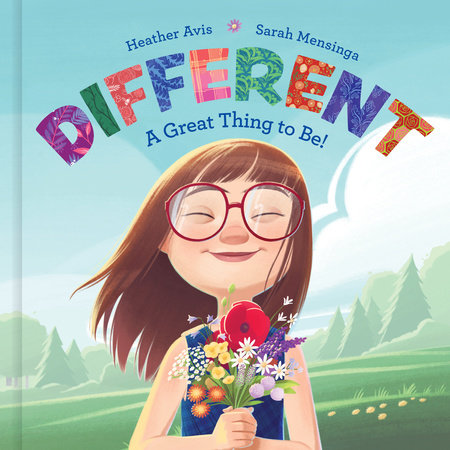5 Ways to Create an Inclusive Culture at Home
by Heather Avis
“What’s wrong with her?”
I turned around and glanced at the child in the checkout line behind us. A preschooler pointed at my daughter as she asked her mom this question. I smiled at her, then made eye contact with the mother just in time to see her expression of horror and embarrassment. She shushed her daughter, grabbed her hand, and hastily moved to another line.
My daughter Macy, who was around six years old at the time and who has Down syndrome, waved to the little girl as she got tugged away. I bent down, held Macy’s sweet little face in my hands, looked through her red-rimmed glasses into her spectacular almond-shaped eyes, and said, “Nothing is wrong with you, my perfectly perfect girl!” Then I kissed her button nose and placed our items on the conveyor belt.
It wasn’t the first time a child had pointed to my daughter and asked a similar question, nor would it be the last. And honestly? I am never bothered by the questions coming from inquisitive children. What I find problematic is the reactions of their parents, who respond just as that mom did — communicating shame and fear as they shut down or ignore their child’s question about a person who is different from them, a person like my Macy.
The thing about all humans is, we are curious, which is terrific. And the thing about kids is that their curiosities are unfiltered, which can make things awkward but, in my opinion, wonderful. Their direct questions allow those of us with the honor of raising them opportunities for learning and growth. Each family’s daily interactions with others provide the ideal classroom to teach our children the vital work of using their power to embrace differences and make our world more inclusive.
As an advocate for inclusion and a Shouter of Worth for those who find themselves excluded, I believe that laying a foundation of inclusion starts at home. If you share the desire to live in a kinder world that welcomes differences, here are five ways to make inclusion a priority in your family:
Teach your children that Different is good:
I think it’s safe to say that, at some point in our lives, all of us have felt different in some way — and that feeling was uncomfortable and perhaps painful. But suppose we teach our kids to see differences as something they should notice, embrace, and celebrate? In that case, we shift the narrative and transform the negativity attached to those differences into something positive.
Expose your children to different kinds of people:
Look at the books on your bookshelves, the toys your children play with, and the shows and videos they are watching. Do these things represent people whose ethnicity differs from your own? What about people with a disability? Those who think and act differently? Or people who live in different parts of the world? Consistently exposing our children to people who are different from them broadens their understanding of the variety inherent in the world they inhabit and paves the way for an inclusive outlook.
Welcome questions:
I love how curious and uninhibited kids are. When our children ask questions about a person who is different or unfamiliar, it may feel uncomfortable at the moment, but let’s choose to view it as an opportunity for learning, growth, and understanding, a window for discovering how to know and love others just as they are. So don’t be afraid to say, “I don’t know, but let’s find out.”
Differentiate between fear of the unknown and discomfort with a particular person or characteristic:
It is our human nature to fear the unknown. But we can dismantle some of it by recognizing and accepting our differences even as we notice what we have in common. So, for example, let’s teach our children that while something unfamiliar may leave them feeling unsettled, it’s not a reason to fear or withdraw from the person.
Be a listener and a learner, and teach your kids to be the same:
When we meet someone different, we must do so with an openness to listen and learn. This posture shows that you genuinely care about the person and are interested in their life. A stance of being a listener and learner is key to building a more inclusive world.
By incorporating these five perspectives into our parenting, we not only teach our children that it’s safe to ask us questions, but we also help them create a world in which every person feels valued and included.
-
Buy the Book:

